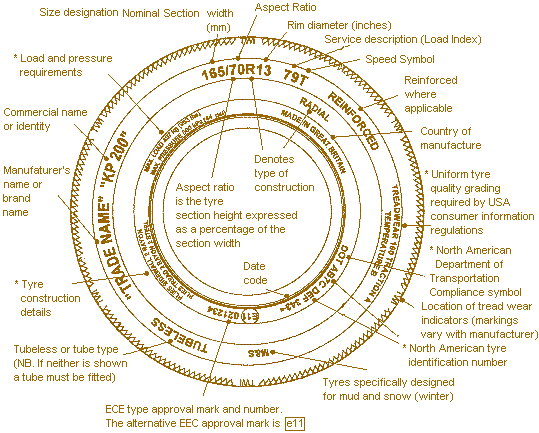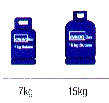
 |
||||
| home > | ||||
CARAVANS
This information dates from 1997
It appears that DIY and caravans don't mix. Every time I try to find information I'm told "it's not available" or "take it to a dealer". Well sorry folks caravans are simple and the only problem you'll have is finding the bits - at any price- caravan breakers or independent repairers are few and far between so you will have to be resourceful.
- where do all the old caravans go?-
If you want to run and old caravan or indeed live in it, as I did, you may want to make it easier to live with. I have added many convenience features to my 1985 Avondale Sandmartin but you could apply them to any caravan since most components are standard.
Until the late eighties caravans in the UK were fitted with 'illegal tyres' due to an 'old boy's agreement' with the department of transport. You WILL get nicked if you take one of these caravans to France. Caravans today must have tyres with the correct weight rating for the axle. UK vans now tend to to use 175 R 13C 84T tyres whilst many continental vans use 14" wheels on the same chassis.


I chose to fit 14" wheels with low profile car tyres, figuring that a stiffer sidewall would improve stability - the jury is still and will remain out! At least I'm not restricted to just one or two tyre suppliers any more.
If you fit car wheels there are a number of things you should
consider:-
Clearance on full suspension bump.
Wheel clamp clearance.
Wheel fixing method, - most but not all car wheels locate on the bolts like
a caravan so the spigot clearance is not important but the PCD of the bolts
can vary 100mm seemed to be correct for my Al-Ko axle. Don't forget the bolts
can be either conical or spherical so make sure you have a matching set. The
Al-KO original bolts are conical.
Wheel load rating, probably isn't so important if you get the wheels from an
average sized car because the car wheel whilst being more lightly loaded will
have a much harder life in terms of cornering force and mileage.
Thanks to the latest bit of legislation you have to pay for the electricity if it's provided whether you intend to use it or not so you might as well. (Unless protecting the environment is higher on your priority than the governments. Should you not have electricity available it may interest you to know that everything you may need in a caravan except a hairdryer and a microwave oven could be run from a car battery if you're careful. A 200 watt voltage inverter can run a TV, satellite receiver or phone charger without a problem and if you use a black & white TV you'll have no problem running them from your car battery along with a couple of lights for the whole evening. My inverter came from Maplin and has been in use since 1996. Recently the price has come down dramatically and they are more widely available.
Don't bother with a bigger one because you'll need an additional trailer for the batteries. A couple of additional tips:- Connect the car battery to the caravan directly with a couple of hefty leads. The seven pin auxiliary socket has so much volt drop you'll be lucky to get 11 volts at the caravan. 10mm^2 earth bonding wire is ideal if you don't mind the colour code! Use the clips from that cheap pair of jump leads that are no use but do remember to solder them. If you're going to do this regularly make sure it's a company car because it does reduce the life of the battery. (Don't buy a used Honda with my name on the logbook). Colour TV's and video recorders eat electricity. An old Black and White set from a car boot sale will suffice. If you need stereo sound, hook the satellite receiver output up to the CD input on the caravan radio.
| DEVICE | POWER CONSUMPTION |
| B&W TV | 18W @ 12V |
| COLOUR TV | 65W @ 240V |
| SATELLITE RECEIVER | 35W @ 240V |
| MOBILE PHONE CHARGER | 4.5W @240V |
If you are going to rely on battery power then gas is going to get used for water and space heating, cooking and boiling the kettle. If you currently rely on two 7kg butane (blue) cylinders then this may be interesting to you.

Firstly butane is no good when the temperature is much below freezing. You learn this lesson quickly though! Change the regulator and bottle for propane (red).

All the equipment inside will run on either. Propane bottles are the same size but weigh less eg. a 7kg butane is a 6kg propane and a 15 kg butane is a 13kg propane. Secondly the bigger bottles are much cheaper. A 6kg bottle is about 85% of the price of a 13kg bottle. Modify your gas bay to take just one 13kg bottle and return it when it's nearly empty rather than run it dry and you'll save money and more importantly over 1kg of weight.
NOTE: Recently caravans gas systems have changed to bring the UK into line with Europe. I've never seen a new system so if you're not sure what you're doing DON'T!
One good winter will convince you to fit an internal water tank. I tried to use the existing Carver housing which was lower than the tank top but it caused no end of problems with air locks and leaks so I wouldn't recommend it. Fit a filler neck from a car above the tank. My tank was actually two 25 litre bottles linked together one directly above the axle and one just in front. This was easier from an installation and availability point of view and if I ever travel with water in the tanks it helps act as a baffle! If you look at a typical diaphragm pump then you will see the flow rate is quite slow. If you can suffer the reliability and noise of an impeller pump the Whale 925 can be used in line, at 9 litres/minute is almost a power shower! Five minutes in the shower should see a couple of renditions of your favorite song.
If you have wondered why some pumps last for years and some fail quickly then it's time you cut one open to find out.
If you have run them dry for several minutes then they overheat and destroy the commutator. If they have been run every day for three years, the carbon brushes have gone and the spring has cut the commutator If it just stopped working it is likely to be an electrical problem inside. Cut the pump open carefully with a hacksaw and remove all the encapsulated electronic noise suppression in the cap and join the wires directly to the brush wires. I don't think you care for the TV picture when you are in the shower! It appears the resistors and capacitors have their leads twisted but not soldered before potting and they go open circuit. I don't know if this is deliberate but I've found two so far. You can reassemble the pump with super glue and self-amalgamating tape when it is working. (Buy the tape from a satellite dealer or Screwfix).
When you've complied with the security requirement of you're insurance company but are still concerned about security it's time to make your landing legs a bit more difficult to get up. No you don't need to padlock each one. Change the standard hex head landing leg screw to something a little bit more difficult for example any Allen screw head above 10mm (everybody has a 10mm Allen key in the car boot) or a Torx bolt head. Weld the new bolt head on top of the original hex then weld the corresponding key into winding brace. If you don't already have a piece of pipe around the screw head weld a piece of old exhaust pipe around it to prevent the screw being turned with grips. DON'T LOOSE THE BRACE.
Mid-eighty's vans had Carver heaters with a remote electronic ignition and thermostat.
These are ideal for modifying to run from a time clock. Even you're friends paying for the electricity don't wake up to thermostatically controlled central heating unless they left it on all night. Keeping with the no mains electric theory and not wanting to reset the clock every time you change the battery means a self-contained battery time clock is needed. The only source I found is a clock designed to replace a domestic wall thermostat with an electronic programmable clock. These are seven day time clocks with three on / off's per day and are powered by 2 AA batteries. They will easily switch the small DC current needed to energize the heater electronics as well as your water heater if you need it. If you don't need the inbuilt thermostat functions you can set the temperature range to the limits. Maybe you can't override the frost protection but that's no bad thing. You can switch the heater or gas off if you don't want it on. The one I've got is a Drayton Digistat 3.
I've had several requests for the manual for the Digistat, so to save you asking click here.
If you find the spark ignition unit times out occasionally without lighting the fire, it will not reliably start up every time with the time clock. In order to eliminate this problem the controller needs a slight modification to persuade it to spark for a couple of seconds longer. You can do this by changing the resistor shown. Vary its value to achieve the shortest reliable start up time.
DON'T FORGET THE GAS SUPPLY IS ON DURING THIS PERIOD.
If you return to the caravan after a summer day out to find it's almost at boiling point inside you can either buy an air conditioning unit and eliminate your loading allowance in one go or fit a fan! A car air conditioning radiator fan uses a very flat 'pancake' motor and will just fit in the roof light area.
It will bring the temperature down rapidly if you can stand the noise. If you wish you can control its speed with a car heater fan speed switch and resistor (beware newer cars use pulse width control not resistors). The fan I acquired would not run backwards very well so if you want to eliminate cooking smells you have to blow them out of a window rather than suck them out the roof!
So you can't afford one of those flashy motorized dishes that the Germans fit to their motor homes? How about this:
Problem 1 Wind Deflection
If you've seen the effect wind has on a household dish you will understand it
WILL be a problem on a caravan. I took the solution from the BBC who found their
big uplink dishes were easy sniper targets during the first Gulf War. Offset
parabolic dishes, which are the common type, act like a snooker ball hitting
a cushion, they reflect the microwaves back to the LNB on the dish arm. If you
turn the dish upside down it moves from being almost vertical to about 30 degrees
to the horizontal, which drastically reduces the wind loading as well as reducing
you chances of being seen by a sniper! Despite talk of the LNB picking up ground
noise the actual results are exactly the same as a correctly positioned dish.
Problem 2 Dish Mounting
A normal motorized mount relies on a truly vertical pole mount which unless
you have more time than sense you can't achieve on a caravan. The best solution
is two motors, one for azimuth and one for elevation. I used two car window
lift motors and a four-way electric door mirror switch to control both axes.
OK so it's not meant to handle window motor currents but unless you are a serious
high-speed channel zapper it will manage the overload for a couple of seconds
at a time.
The whole assembly is fitted to the jockey wheel with two jubilee clips or spiked into the ground with a big boot if south happens to be behind the van. I made the LNB arm removable but since LNB's are 10 a penny now it's probably not necessary. Lining up the dish takes a compass and about 30 seconds - maybe 1 minute for digital!
home • inspiration • motorcycles • brakes • caravans • robotwars • flying • cars • projects • links • sitemap
E-mail: web@thewombles.net
© Splash_Womble